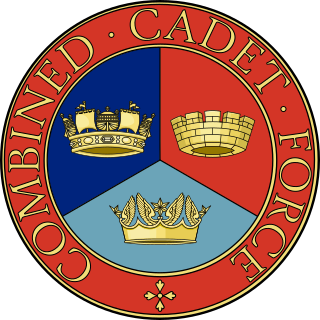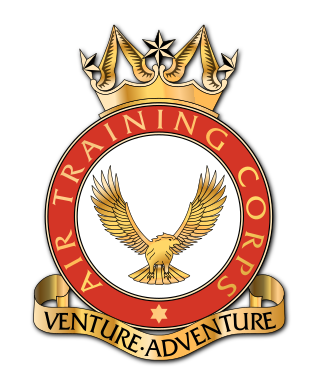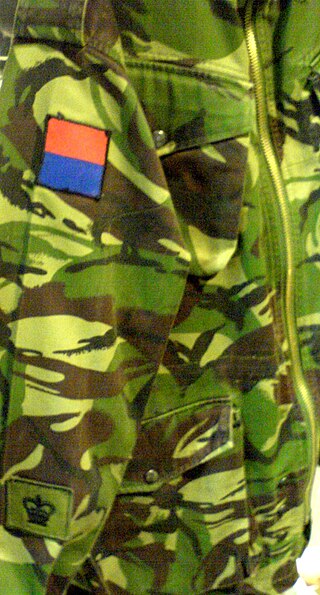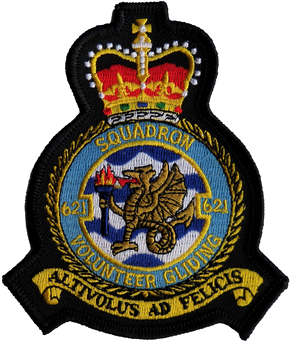
The Combined Cadet Force (CCF) is a youth organisation in the United Kingdom, sponsored by the Ministry of Defence (MOD), which operates in schools, sub divided into Royal Navy, Royal Marines, Army and Royal Air Force sections. Its aim is to "provide a disciplined organisation in a school so that pupils may develop powers of leadership by means of training to promote the qualities of responsibility, self reliance, resourcefulness, endurance and perseverance".

The Air Training Corps (ATC) is a British volunteer youth organisation of the United Kingdom; aligned to, and fostering the knowledge and learning of military values, primarily focussing on military aviation. Part of the Royal Air Force Air Cadets (RAFAC), the ATC is sponsored by the Royal Air Force (RAF) and the wider Ministry of Defence (MoD). The majority of Air Training Corps staff are volunteers, though some staff are paid for full-time work; including Commandant Air Cadets, who is a Royal Air Force officer as part of a Full Term Reserve Service commitment.
The officer ranks of the Royal Air Force, as they are today, were introduced in 1919. Prior to that Army ranks were used.
The Royal Air Force Volunteer Reserve (Training Branch), often abbreviated to RAFVR(T), was a Volunteer Reserve element of the Royal Air Force specifically appointed in a cadet training role within the Royal Air Force Volunteer Reserve. Members of the RAFVR(T) had no call-up liability and often operated part-time with the Air Experience Flights and Volunteer Gliding Squadrons, which provide flight experience for the Royal Air Force Air Cadets.

Commandant Air Cadets is the title given to the Royal Air Force officer who is responsible for running the Royal Air Force Air Cadets, embracing the Air Training Corps (ATC) and the RAF Sections of the Combined Cadet Force. The current Commandant Air Cadets is Air Commodore Tony Keeling, who assumed the post in September 2020. He will leave the post in September 2024.

A Volunteer Gliding Squadron (VGS) is an aircraft squadron of the Royal Air Force (RAF) which provides flying training in glider aircraft for Royal Air Force Air Cadets. All current operational Volunteer Gliding Squadrons operate a sole type of aircraft, the Grob G103A Twin II Acro, a conventional winch-launched tandem-seat sailplane known by its British military designation, Viking T1.

Air Commodore Gordon Moulds, CBE DL is a retired Senior Royal Air Force Officer who held various commands including most recently Commander of Kandahar Airfield in Afghanistan.
The Royal Air Force Volunteer Reserve (RAFVR) was established in 1936 to support the preparedness of the U.K. Royal Air Force in the event of another war. The Air Ministry intended it to form a supplement to the Royal Auxiliary Air Force (RAuxAF), the active reserve for the RAF, by providing an additional non-active reserve. However during the Second World War the high demand for aircrew absorbed all available RAuxAF personnel and led the RAFVR to quickly become the main pathway of aircrew entry into the RAF. It was initially composed of civilians recruited from neighbourhood reserve flying schools, run by civilian contractors with largely RAF-trained flying instructors as well as other instructors in related air war functions, such as observers and wireless operators.

10 Air Experience Flight (AEF) is one of thirteen such units run by 6Flying Training School of the Royal Air Force. It was formed in the 1950s, along with other AEFs, to teach basic flying to members of the Air Training Corps (ATC), Combined Cadet Force (CCF) (Royal Air Force) Section. It mainly flies cadets from the local wings of Cumbria and Lancashire Wing (the North Lancashire half only as the Cumbrian half use 11 AEF at RAF Leeming, due to the distance from RAF Woodvale), Greater Manchester Wing, Merseyside Wing, No. 2 Welsh Wing and CCF contingents.

The Royal Air Squadron Trophy Competition, also known as the National Ground Training Competition, was created as a way for CCF(RAF) sections to contest the Air Squadron Trophy.

Royal Air Force Upavon, or more simply RAF Upavon, is a former Royal Air Force station in Wiltshire, England. It was a grass airfield, military flight training school, and administrative headquarters of the Royal Air Force. The station opened in 1912 and closed in 1993, when it was transferred to the British Army and became known as Trenchard Lines.

Air Commodore Ian Richard William Stewart is a retired British Royal Air Force officer. His last posting was as the United Kingdom National Military Representative at Supreme Headquarters Allied Powers Europe. He was Commandant Air Cadets between 2008 and 2010, and Air Commodore, Royal Air Force Reserve from 2014.

Tactical recognition flash (TRF) is the British military term for a coloured patch worn on the right arm of combat clothing by members of the British Army, Royal Navy and Royal Air Force. A TRF serves to quickly identify the regiment or corps of the wearer, in the absence of a cap badge. It is similar to, but distinct from, the DZ Flashes worn by members of Airborne Forces.
Royal Marines Cadets (SCC) are part of the Sea Cadets, a United Kingdom uniformed youth organization was formed in 1955 by the then Commandant General Royal Marines – General Sir Campbell Richard Hardy, KCB, CBE, DSO & Bar. The Royal Marines Cadets of the SCC specialise in activities such as orienteering, fieldcraft, and weapon handling.
Air Commodore Cathcart Michael Wight-Boycott, was a British fighter pilot during the Second World War and a senior Royal Air Force officer during the post-war years. In 1961, Wight-Boycott became the 10th Commandant Royal Observer Corps.

A warrant officer (WO) in the British Armed Forces is a member of the highest-ranking group of non-commissioned ranks, holding the King's Warrant, which is signed by the Secretary of State for Defence.
The following table displays the ranks of the Community Cadet Forces, the Combined Cadet Force, the Volunteer Cadet Corps, and the Girls Venture Corps Air Cadets. This table is based on equivalent Rank Structures within the Cadet Forces as detailed in regulations of the SCC, RMC, and the Air Cadets.
The Volunteer Cadet Corps (VCC) is a national youth organisation managed by the United Kingdom's Royal Navy and sponsored by the UK's Ministry of Defence. The VCC comprises:
At the end of the Cold War in 1989, the Royal Air Force (RAF) structure was as follows:

621 VGS is a Volunteer Gliding Squadron based at RAF Little Rissington in Gloucestershire, United Kingdom. 621 VGS is one of 10 remaining Volunteer Gliding Squadrons and operates under No.2 Flying Training School, within No.22 (Training) Group of the Royal Air Force Air Command.












